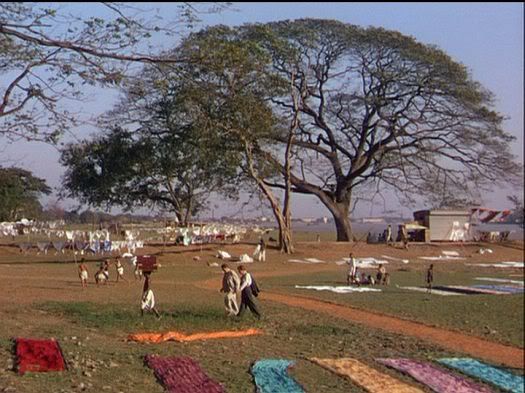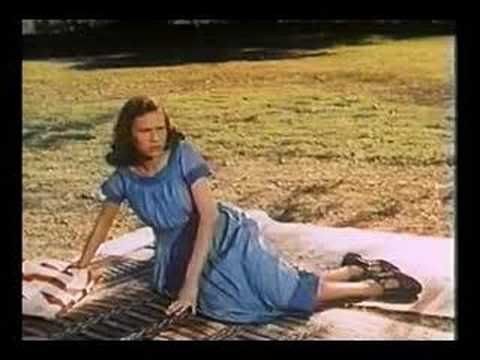
The River is one of my all time favorite films. I saw bits of it several times on the late late show in my younger days. It always struck me as a "neat film" but I could never find out the title or see the whole thing. Recently I found it and watched and it has now become one of my most favorites. I give is 5 starts on my netflix rating and I only give 5 starts to my absolute favorites such Bergman's The Seventh Seal. The River is a strange film directed by Jean Renoir. Renoir was a great director, and son of the famous Painter. The first time I saw the river I had no idea who made it. I came to respect Renoir, years before I knew about the River. Probably his most famous works are Rules of the Game, and Grand Illusion both "must sees" for anyone who pretends to a good knowledge of film as an art form. These were made in the 1930s when Renoir was at the top of his game, one of the true greats of cinema in Europe. The River, on the other hand, was made in 1950 released in 1951. By this time Renoir had been ruined in Hollywood and was no longer commercially viable as a director. He was searching for a story that would put him over again. He found a review of the novel The River by Rumer Godden whose major work is probalby Black Narcissus. The River is a true story, the story of Godden growing up in Bengal.
Renoir bought the rights to the novel but had no money. No famous American actor would do it. No one wanted to shoot in India, technicolor had never been used in India. This was the first color film made in India it almost didn't get made due to the limitation on shooting in color in a place with no real film making infrastructure set up to deal with technicolor. Yet the film turned out to be called one of the greatest uses of color in all of film history, on a par with The Red Shoes for its use of color. It's also Renoir's first color film. He just happened to connect with a Florist who wanted to make a movie in India and was interested in that story. The producer knew nothing of film making but had the money and did not have the rights to the film he wanted to do. Renoir had the knowledge and the film rights. They got together.
It's a female coming of age myth, but it transcends that. It's about a girl growing up and experiencing her first crush, unrequited of course, which catapults her out of childhood and gives her her first taste of being an adult. It's a love triangle with four parts, does "love rectangle" make sense? Three young girls are in love with a soldier who comes to India from the war, having lost his leg, to live with his cousin because he's alienated form his native America. The Cousin is Scottish as are the other two families. As the narrator (the adult voice of the youngest girl of the triangle, Harriet) says, "in the war he was a hero, after the war is forgotten he's just a man with one leg." The Cousin is the father of one of the girls who vies for his attention (Melanie played by professional Indian dancer Radha). She's not really as serious as the other two (he is her cousin). The other two are Valerie (Adrienne Corri), the oldest (16) and most well developed who is now a young woman and very beautiful with flaming red hair, and the youngest (14) Harriet ("Harry") (Patricia Walters). Harriet's family lives in India in order to manage a jute factory. Jute is a fibrous plant made into rope and also paper. The two neighbor girls belong to families that are also involved in Jute production and all three families are wealthy the standards of the community, although not extravagantly so.



No comments:
Post a Comment